

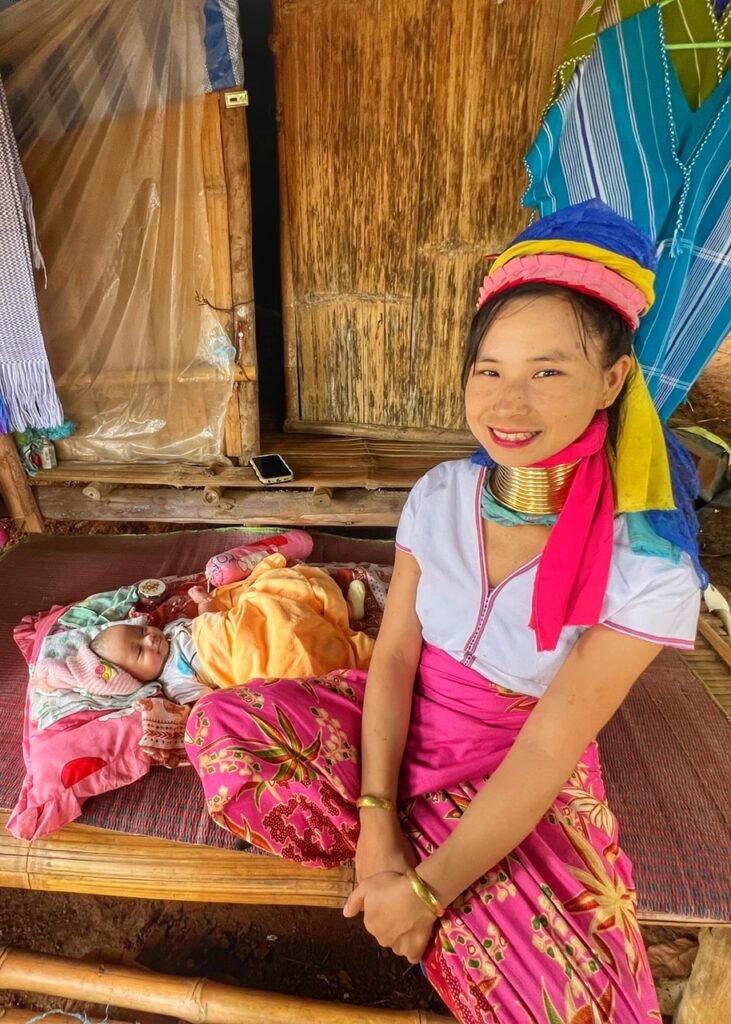
We are always a bit wary about visiting tribes or places that are portrayed as a spectacle of animal or human tourism. One such place was the Hill Tribe and Long Neck Karen Village outside of Chiang Rai, which according to Google reviews, can definitely feel like a gray area. However, after understanding the motive and history behind the village, it was ultimately an experience we were willing to support because it benefits the people that live there.
The village was created by the Friends of The Hill Tribes Northern Thailand Foundation, which is a charitable foundation dedicated to helping those in need, especially Burmese refugees who were being persecuted in their country including five distinctive tribes: Akha, Yao, Lahu, Kayaw and Long Neck Karen.
The project, which collects revenue from tourist dollars and other sources, provides these refugees basic needs such as housing, clothing, blankets, and water and gives us a window into their unique cultures and traditions.
While all of the tribes on the property were unique to visit in their own way, the most peculiar, and fascinating, lifestyle belongs to that of the Long Neck Karen tribe. This ethnic minority, an often displaced and marginalized group, is primarily from Burma (Myanmar) and a small part of Northern Thailand.
When you visit the village, you have the opportunity to buy handicrafts, as well as take photos and give direct donations to these quite striking women and children.
Of course, it’s difficult to not notice the permanent jewelry that circumscribes the necks of these ladies, from the smallest of toddlers to the wisest of women…and the older you are, the more rings you acquire.
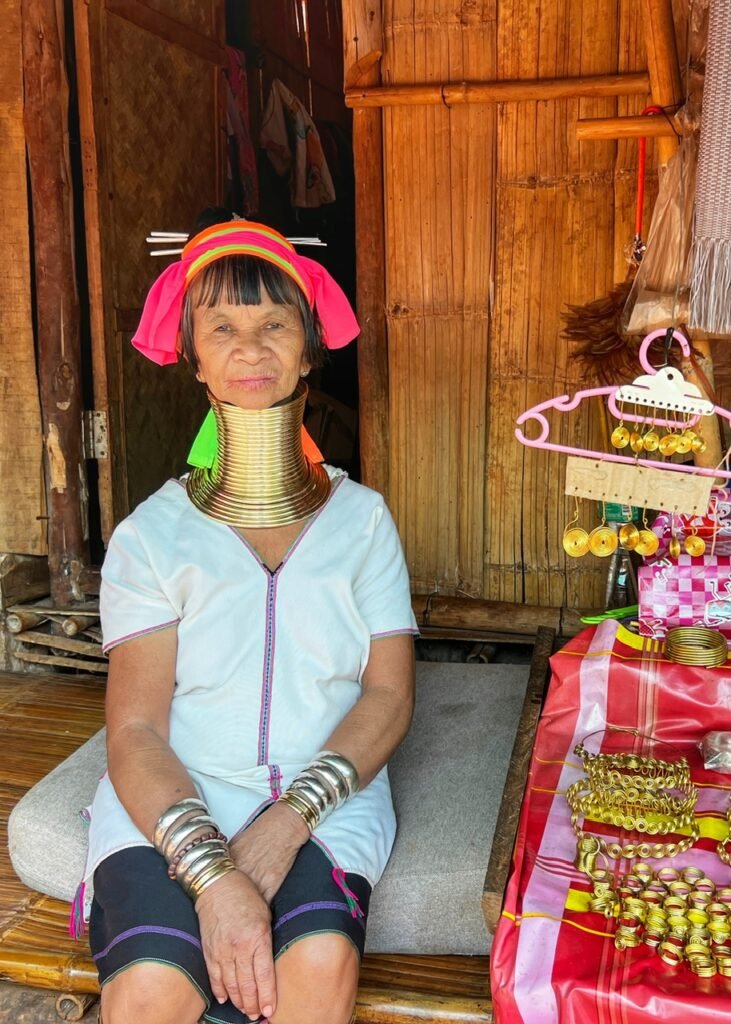

The practice of wearing neck rings is believed to be centuries old. It is seen as a point of pride and a strong symbol of the Karen people’s cultural heritage and sign of beauty. These rings create the appearance of an elongated neck, though they actually push the collarbones and ribs down, rather than lengthening the neck.

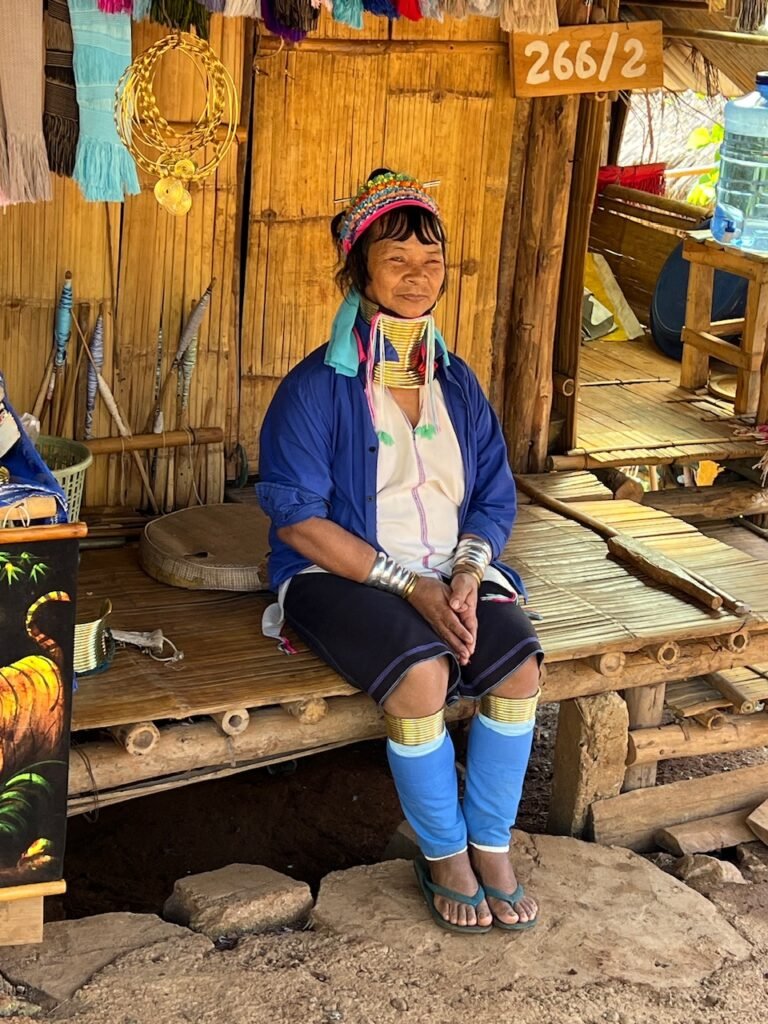
While the rings give the illusion of an elongated neck, they can cause health issues, such as weakened neck muscles. There are myths that if a woman removes these her neck will snap, which won’t happen. However, removing them can definitely be painful and difficult after years of wearing them. Of course, she will likely only remove them if she chooses to leave her tribe.
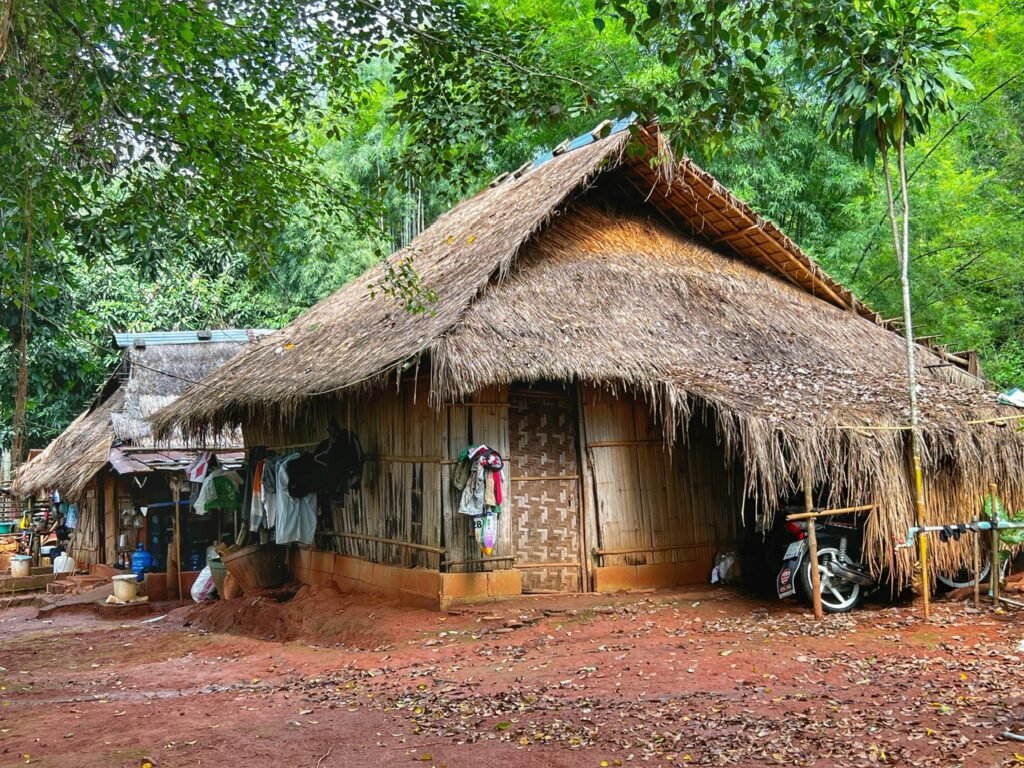
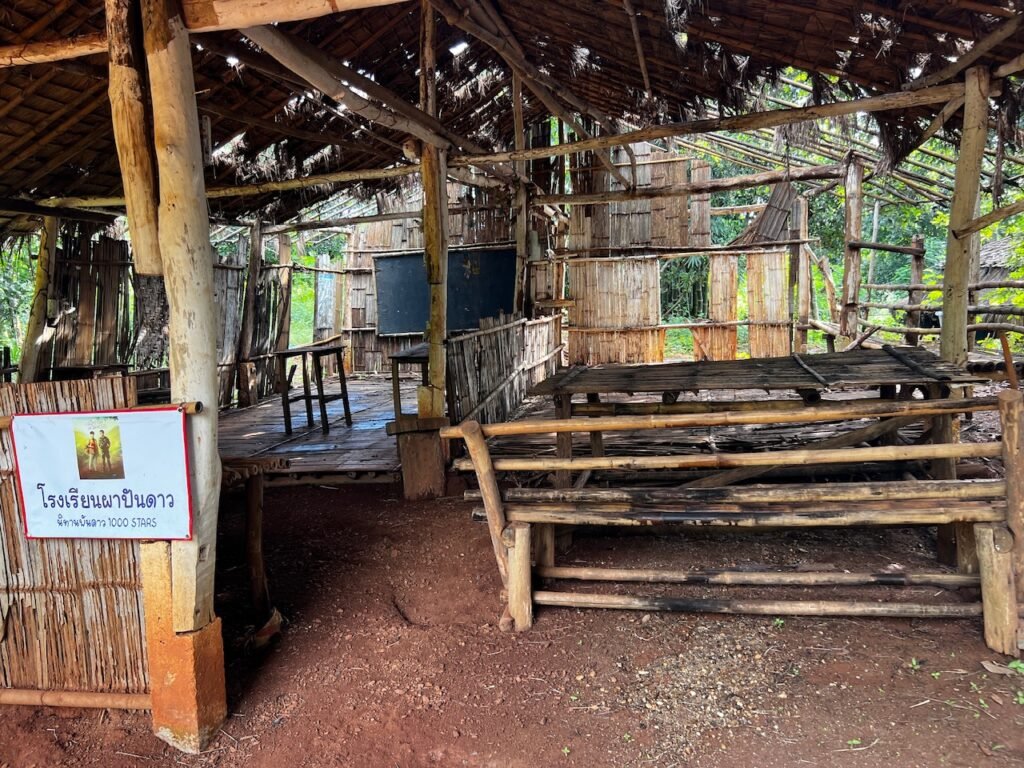
One of the many houses within the villages. Nearby, this schoolhouse was used in a movie set called “1000 Stars.”
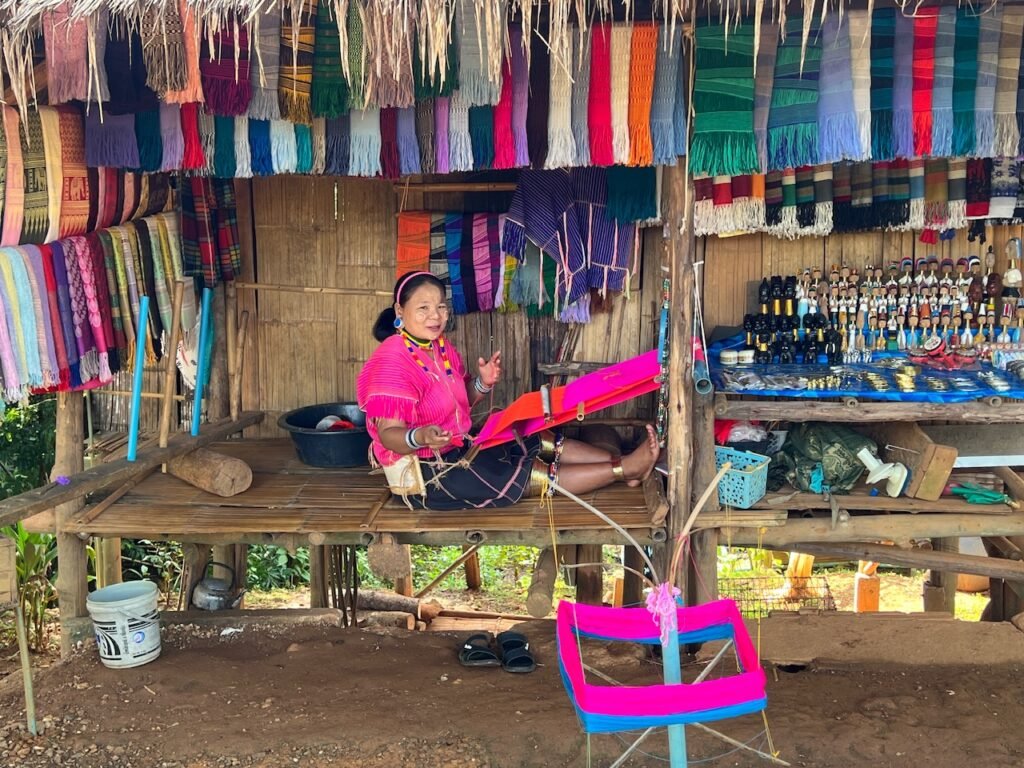
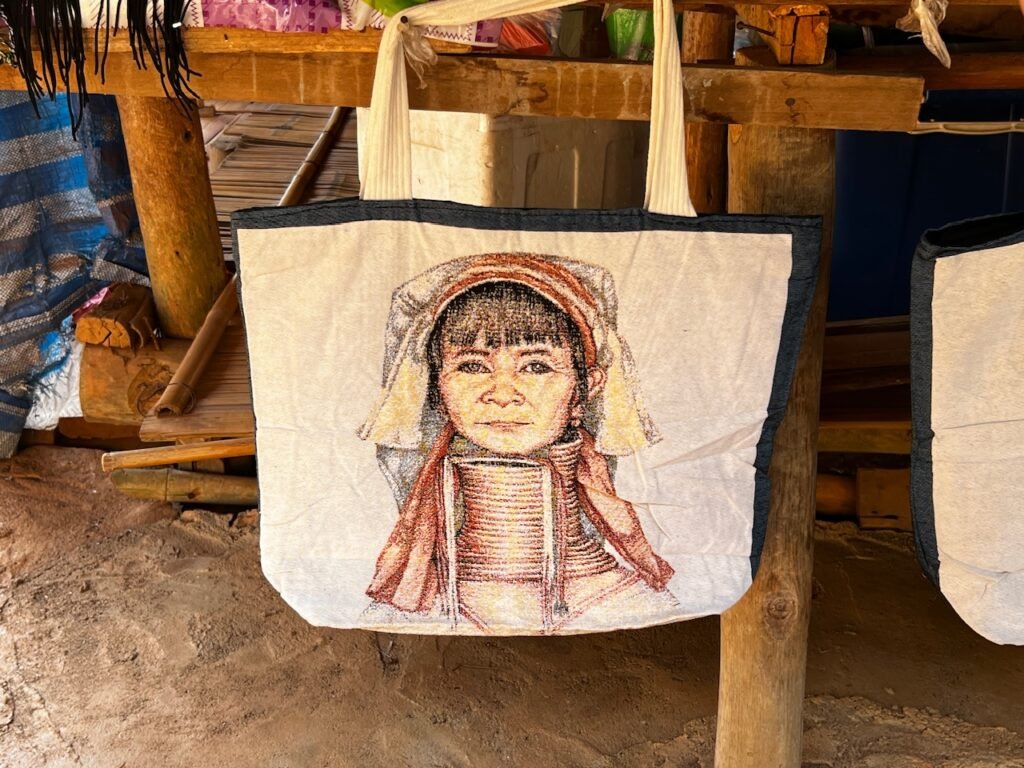
When they were not posing for pictures or manning their shops, the Karen women could often be witnessed weaving scarfs or clothing. The handicrafts available included unique bags…
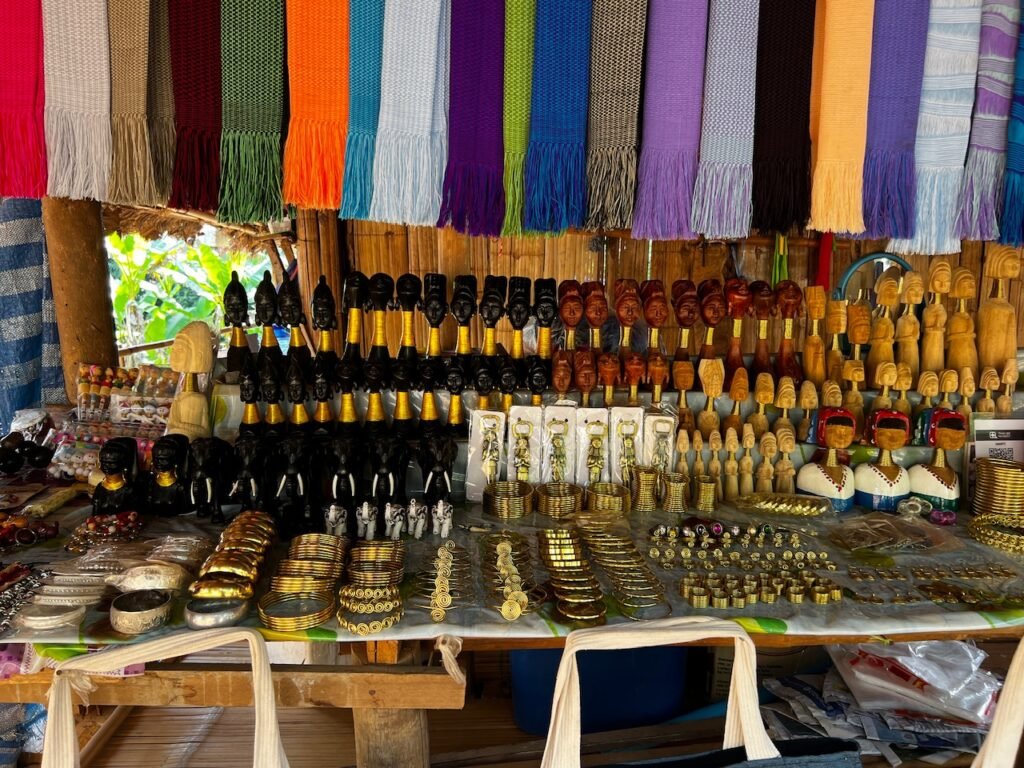

…scarves, jewelry and sculptures. Some even appear to be spring-loaded bobble heads. Bobble heads these real people are not and these brass rings are surprisingly not hollow and light, but incredibly heavy and cumbersome.
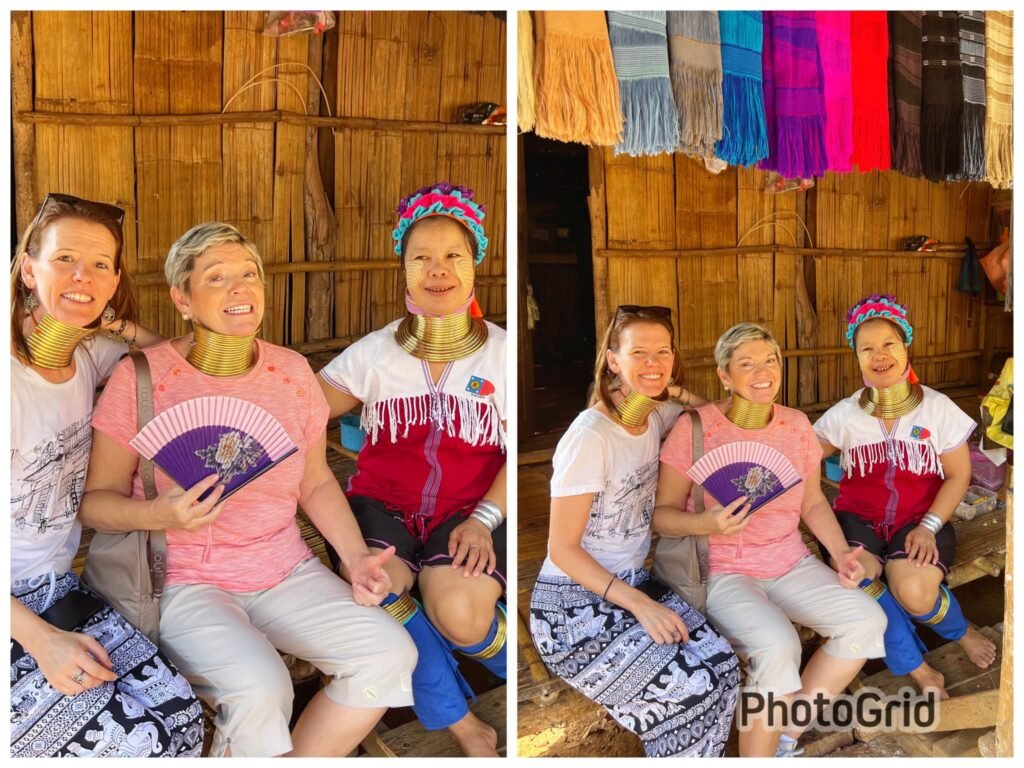
Mandy and Grace, Greg’s stepmom, (yes! They’re visiting!!) experienced this discomfort first hand as they tried…a half…of one on. Uh. Guess it’s clearly just something you just have to grow up with to avoid having your face match this emoji?! 😬
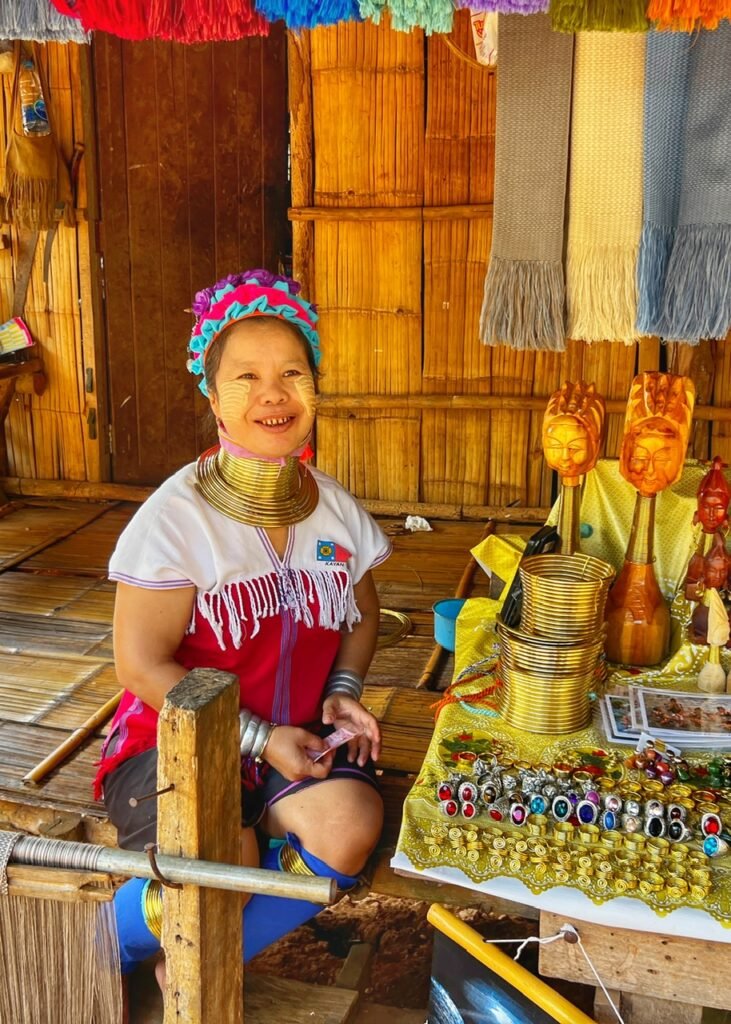

You will notice that the ladies not only wear the rings around their necks, but have them looped around their lower legs. Well, that’s a different model of compression socks…
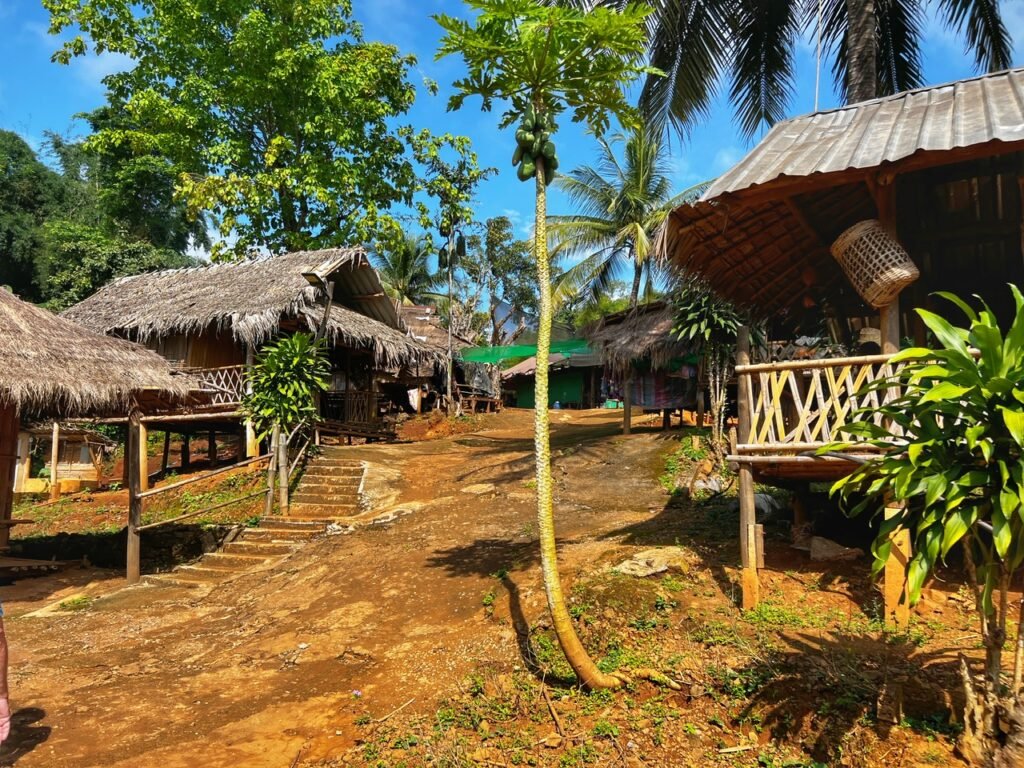
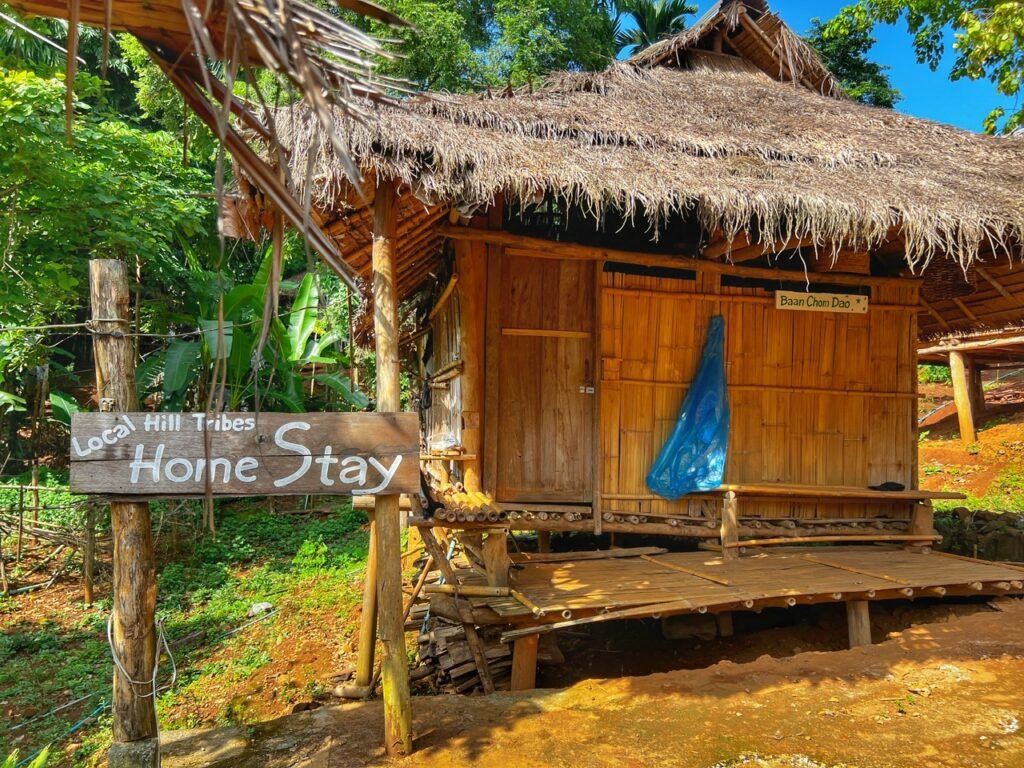
Other houses in the village, which can even include a homestay if you so desire.
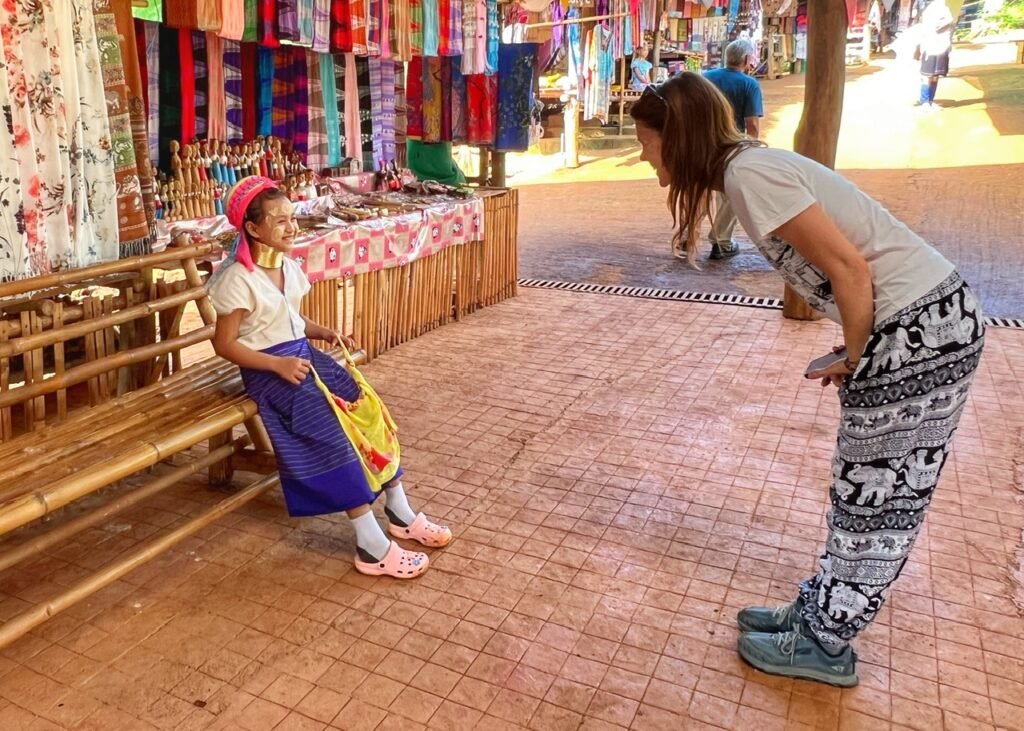
Mandy approaching a young girl who awards her with beautiful smile…
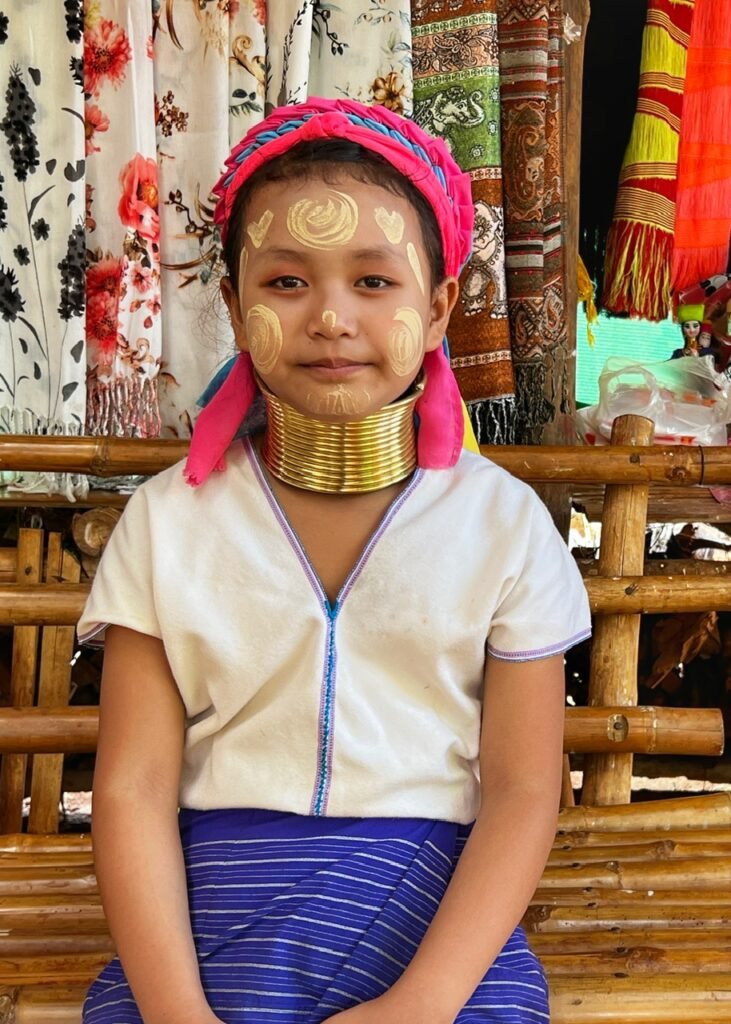
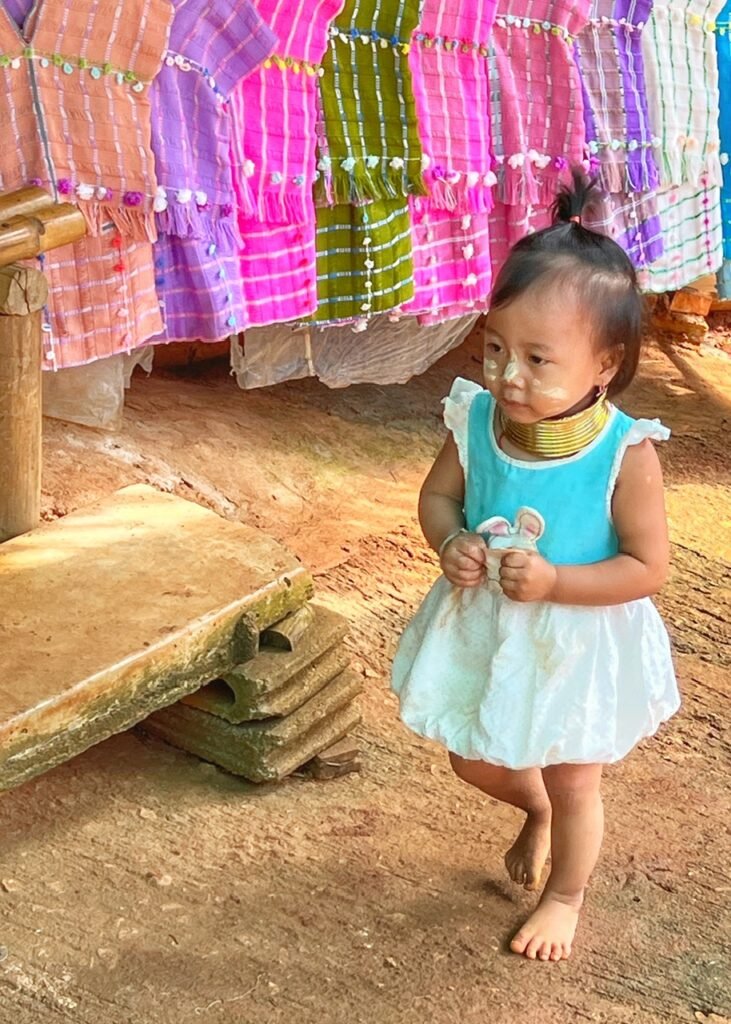
…until her photo is taken, and it disappears, which led us to kinda regretting the ask. It was definitely difficult for us to see children so young in such binds, but we have to remind ourselves that this is simply their cultural, and they don’t know any differently.

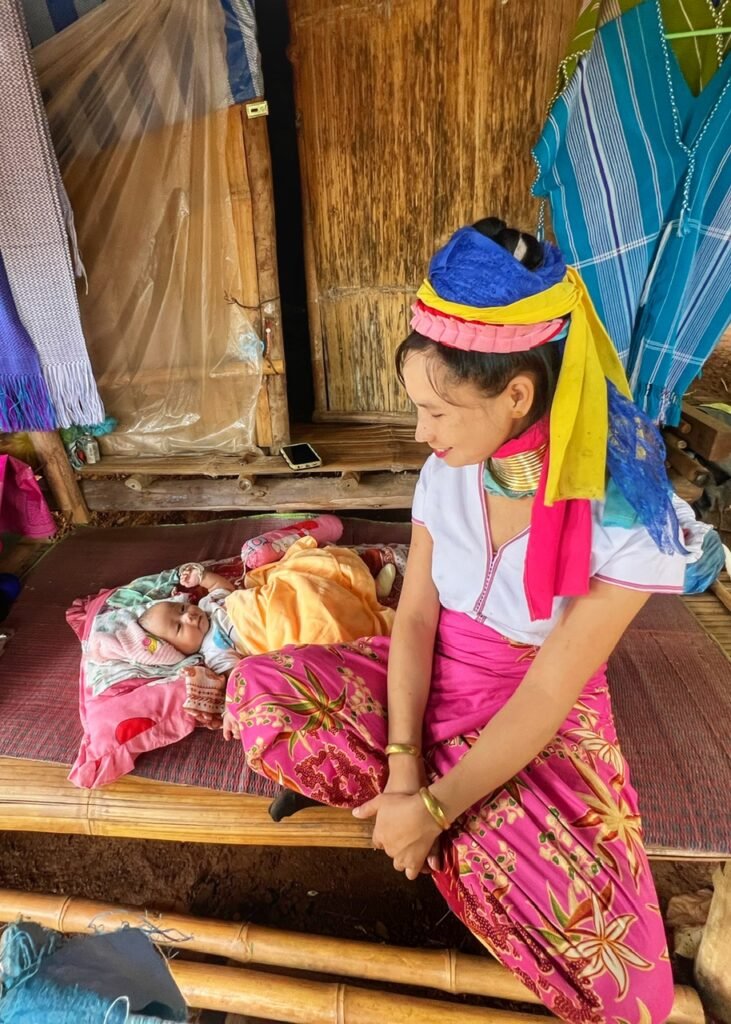
Like a tree, these women get more rings as they age. The majority of the ones with young children had a glow…
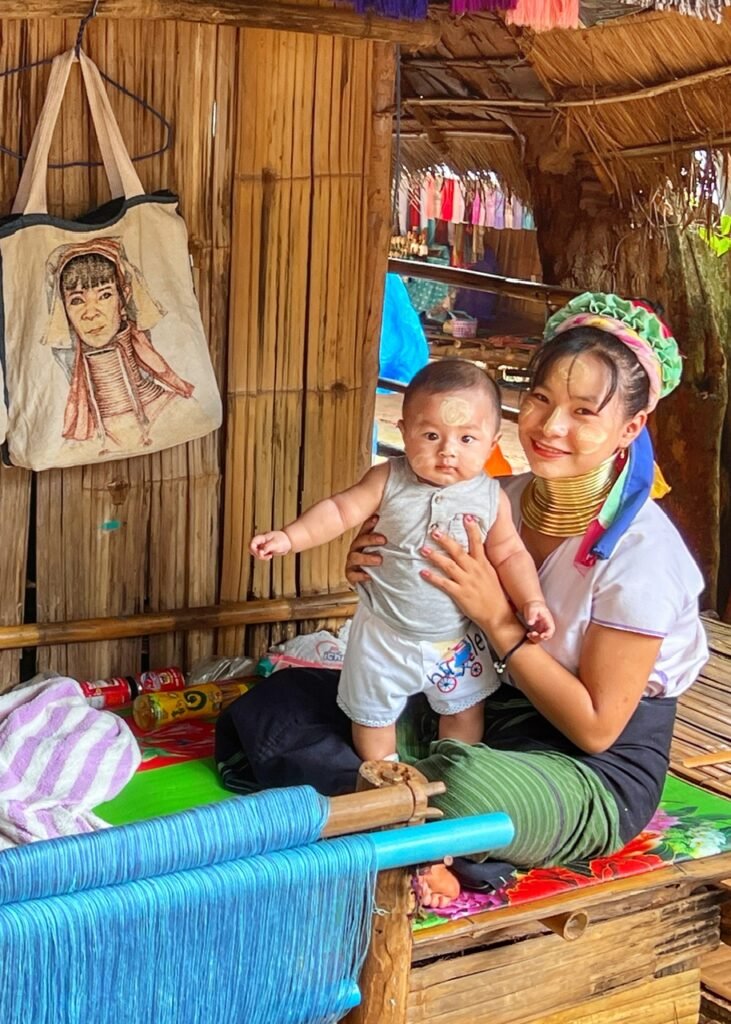
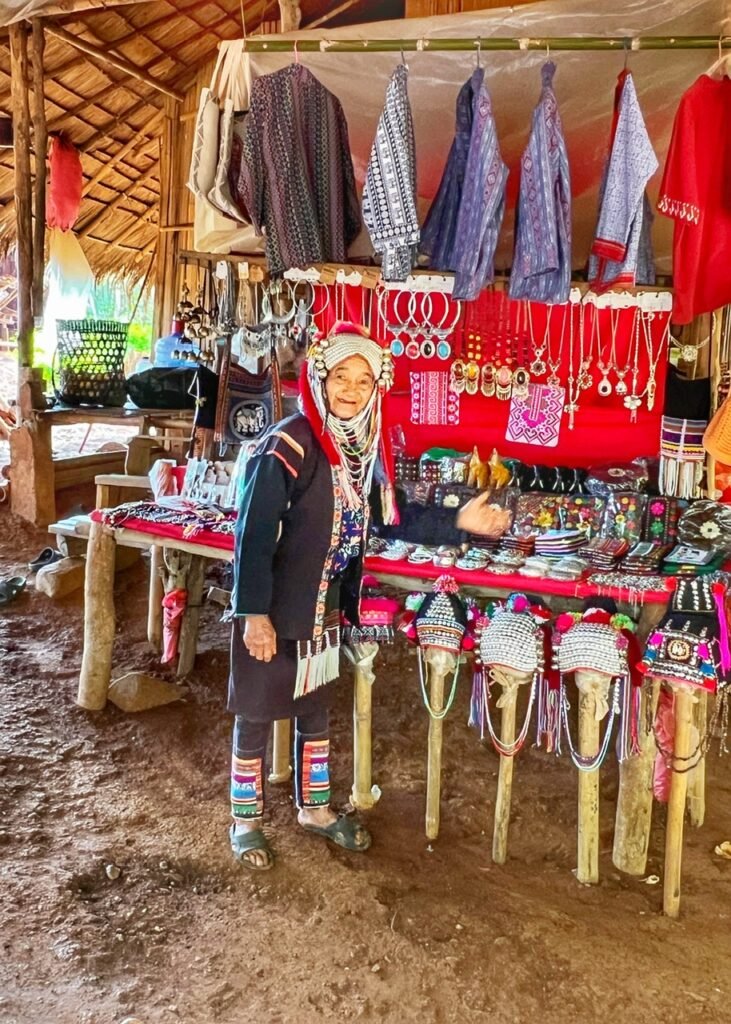
…or an aura of happiness that surrounded them. We found ourselves constantly wondering what their partners were doing all day and really wish we could have communicated more. They didn’t speak any English beyond hello. A gentle sweet face who welcomed us to the Akha tribe.
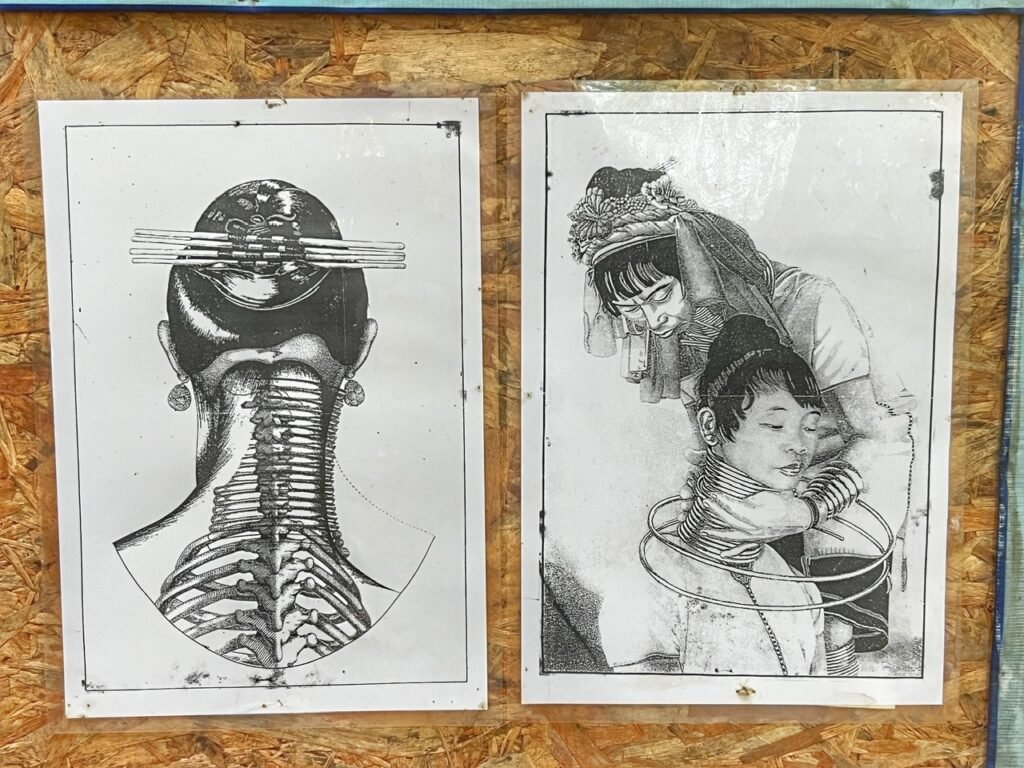
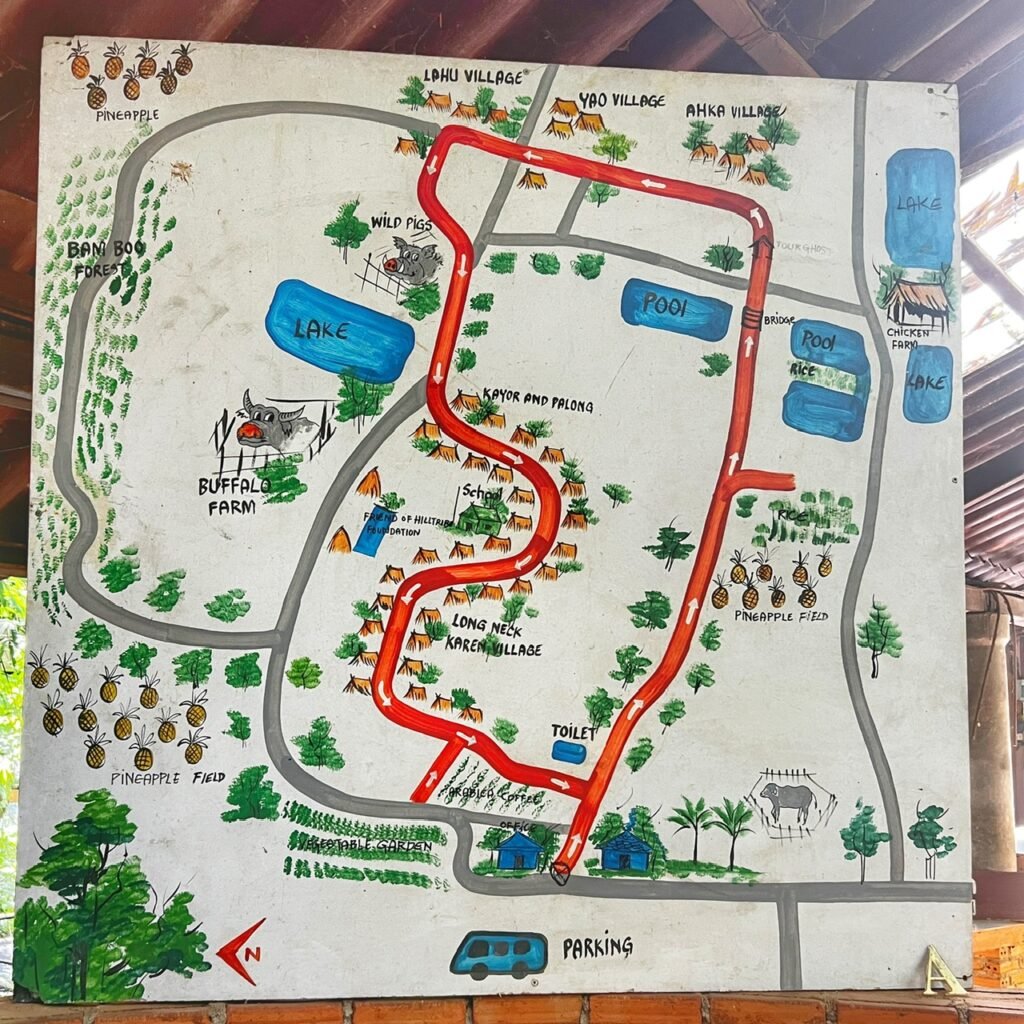
A sketch that illustrates the ringing process, as well as a map of the village. It took about 45 minutes to walk through and cost 300 Baht, or $9/person for the experience. Make sure to also take small change for individual contributions, especially if you plan to take photos.
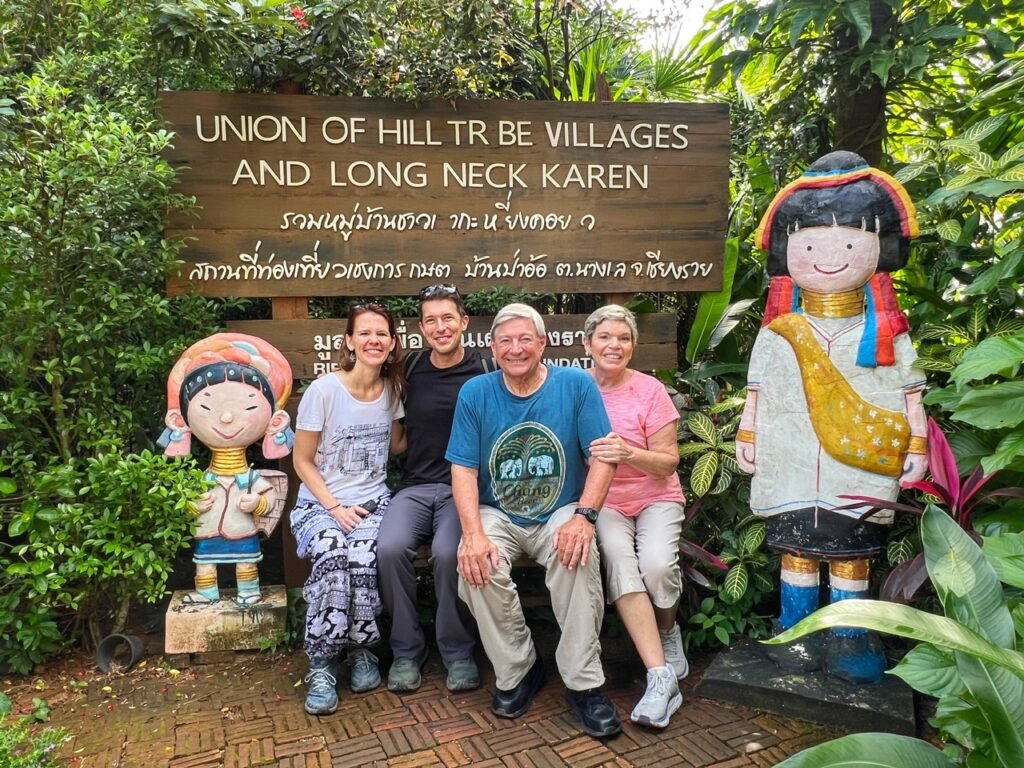
Welcome to Thailand, Larry and Grace! This was quite an introductory experience!!



